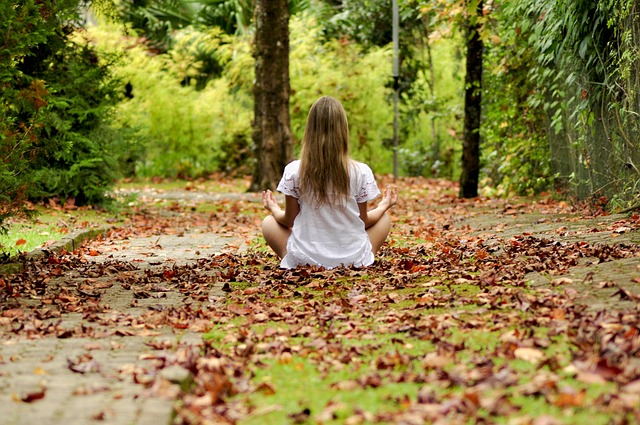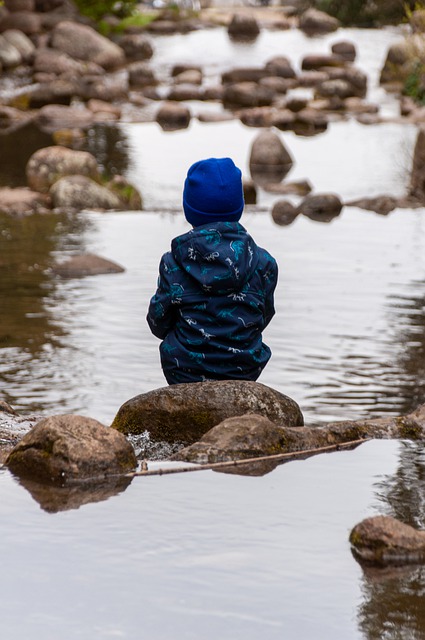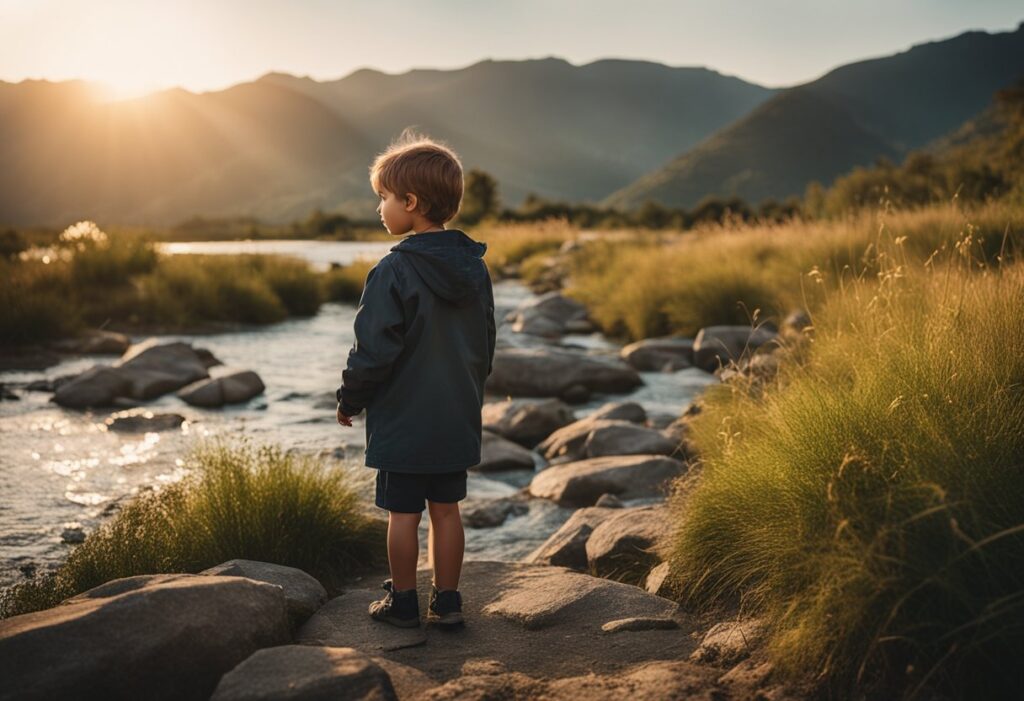Mindfulness for Kids: 7 Tips To Start

Mindfulness for kids is a practice that centers on teaching children how to be fully present in the moment and aware of their thoughts, emotions, and bodily sensations without judgment. This concept, derived from ancient meditation practices, has gained traction in modern psychology as an effective way to cultivate emotional resilience, improve focus, and reduce anxiety and stress. By encouraging kids to engage with the world around them with a sense of curiosity and acceptance, mindfulness can help them develop healthier responses to the challenges they face.
Introducing mindfulness to children requires a different approach than one might use with adults. Their understanding is more concrete, so explanations and activities need to be adapted to their level of cognitive development. It’s important to make mindfulness practice a fun and engaging experience. Utilizing age-appropriate techniques such as short breathing exercises, guided imagery, or story-based meditations helps make the practice accessible and enjoyable for them.
In teaching mindfulness to children, one can integrate simple practices into daily routines to help children learn to focus on the present moment. Techniques include mindful listening to the sounds of their environment, mindful eating to savor and enjoy their food without distraction, or even mindful walking to pay attention to the sensations of their feet touching the ground. These practices empower children to notice their thoughts and feelings without becoming overwhelmed by them, thereby cultivating a foundation for emotional wellbeing.
Understanding Mindfulness for Kids
Incorporating mindfulness into a child’s daily routine can have a profound impact on their ability to remain calm, maintain focus, and manage emotions effectively.
What is Mindfulness for Kids?
Mindfulness for kids refers to engaging them in practices that encourage staying present and attentive to their current experience without judgment. This typically includes:
- Attention Training: Teaching kids to focus on their breath, body sensations, or sounds.
- Awareness: Cultivating a heightened awareness of their surroundings, thoughts, and feelings.
Why Mindfulness for Kids?
Mindfulness helps children by:
- Developing Focus: Strengthening their ability to concentrate on tasks at hand.
- Enhancing Emotional Regulation: Giving them tools to understand and manage their emotions.

Benefits for Kids
Practicing mindfulness can yield several benefits for a child’s mental and physical health, including:
- Improved Mental Health: Reduction in symptoms of anxiety and depression.
- Cognitive Benefits: Better memory, attention span, and academic performance.
- Emotional Advantages: Increased empathy, patience, and ability to cope with stress.
- Health Improvements: Better overall well-being and sleep patterns.
These benefits underscore the importance of mindfulness practices in the holistic development of children.
Getting Started with Mindfulness
Introducing mindfulness to children can create a foundation for emotional health and resilience. Parents and caregivers play a crucial role in this process, and the environment in which mindfulness is taught is just as important.
How to explain mindfulness to a child
Mindfulness can be described to a child as paying close attention to what they’re experiencing in the moment without judgment. For example, when teaching mindfulness, one might say, “Notice how your breath feels as it goes in and out,” focusing on the sensation rather than thoughts. It’s practical to incorporate simple activities such as:
- Listening to a bell: asking them to focus on the sound until they can no longer hear it.
- Mindful eating: encouraging them to savor each bite, noticing the textures and flavors.
Role of Parents and Caregivers
Parents and caregivers are the child’s first teachers of mindfulness by embodying the practice themselves. They can foster mindfulness by:
- Creating routine moments for practice, such as a minute of silence before meals.
- Practicing breathing exercises together, using phrases like “Let’s breathe in calm, breathe out a smile.”
- Demonstrating non-judgmental attention to their own thoughts and feelings, modeling the behavior for the child.
Creating a Conducive Environment
A quiet room or a peaceful corner can enhance a child’s mindfulness practice. The environment should be:
- Tranquil: Avoiding distractions such as loud noises or visual clutter.
- Comfortable: Including cushions or mats for sitting during meditation.
By ensuring a supportive role and required stillness of the surroundings, mindfulness for children can be effectively nurtured.
Mindfulness Techniques for Kids
Mindfulness can help kids reduce stress and enhance their concentration. Below are engaging techniques tailored specifically for children.
Simple Breathing Exercises
Breathing Buddy: Children can lie down with a stuffed animal on their chests to watch it rise and fall with their breaths. This visual cue helps them stay focused on the breath and calms their minds.
Counting Breaths: They can slowly inhale, counting to three, hold it briefly, and exhale to the count of three. This simple exercise aids in regulating their breathing patterns and promotes relaxation.
Engaging the Senses
Sensory Focus: Have kids focus on one sense at a time, such as listening to the hum of a fan or feeling the texture of a blanket. This activity sharpens their attention and anchors them in the present moment.
Food Tasting: Kids can practice mindfulness by slowly eating a small piece of food, noticing the flavors, textures, and sensations. This encourages a fuller sensory experience.
Mindful Movement and Yoga
Yoga Poses: Introduce children to simple yoga poses that encourage balance and focus. Poses like Tree or Warrior aid in developing body awareness and concentration.
Stretching: Encourage kids to engage in stretching exercises, paying attention to the movement and how their body feels. This helps connect the mind and body through slow, deliberate motions.
Incorporating Mindfulness into Daily Life
Mindfulness can be seamlessly integrated into a child’s life through structured activities and the use of modern tools. This integration helps in fostering an environment where children can learn to be present and engaged.
Children’s Mindfulness Activities
In the classroom setting, teachers can introduce short mindfulness exercises before or after classes. These activities could include breathing exercises, listening to a mindfulness bell, or a short meditation. Teachers might start with a simple activity such as “mindful listening,” where students close their eyes and focus on the sounds they can hear for one minute.
Why is Mindfulness Important for Students
Mindfulness practices help students by reducing stress and anxiety, which can improve their academic performance and social interactions. For instance, when students practice deep breathing before a test, they can manage their nerves better, leading to increased concentration and better outcomes.
Activities for Home and Family Time
At home, families can integrate mindfulness into daily routines. Family time can include practices such as:
- Gratitude sharing: Each member shares something they’re grateful for during dinner.
- Mindful walks: Taking a walk together and noticing the sights, sounds, and sensations experienced.
These activities encourage presence and appreciation for the moment within the family unit.

Using Mindfulness Apps and Tools
Mindfulness apps and tools provide interactive and child-friendly ways to practice mindfulness. Apps like “Headspace for Kids” offer guided meditations on topics such as calm, focus, and kindness. Tools, like mindfulness cards or chime bars, can be used to signal the beginning and end of an activity, making the practice tangible for kids.
Enhancing Mindfulness Practice
Incorporating mindfulness practices into a child’s daily routine is pivotal for the development of sustained attention and emotional regulation. It involves creating a structured approach and fostering an environment where mindful behaviors like gratitude and compassion become second nature.
Establishing Routine and Consistency
- Forming a Habit: Schedule mindfulness exercises at the same time each day to establish a habit. For example, setting aside time after breakfast or before bed can help children anticipate and prepare for the practice.
- Progression of Techniques: Begin with simple breathing exercises and gradually introduce more advanced techniques as children become more comfortable and adept at mindfulness.Age GroupTechniqueDuration 3-5 Breathing with toys for 1-2 minutes | 6-8 Body scans for 3-5 minutes | 9-12 Guided visualizations for 5-10 minutes
Adapting the type and complexity of exercises based on age ensures that children remain engaged and capable of practicing mindfulness effectively.
Cultivating Gratitude and Compassion
- Gratitude Journals: Encourage children to maintain gratitude journals wherein they write one thing they are grateful for each day. This simple activity improves their ability to recognize and express thankfulness consistently.
- Compassion Exercises: Introduce children to compassion exercises, such as sending kind thoughts to people they know or even to themselves. Role-playing scenarios where they can express empathy also strengthens their understanding of compassion in daily interactions.
Incorporating these practices into a child’s life enriches their emotional intelligence and supports their overall well-being.
Overcoming Challenges

Introducing mindfulness to children comes with its own set of challenges, primarily dealing with distractions and restlessness, as well as tailoring practices for children with special needs.
Dealing with Distractions and Restlessness
Children are naturally energetic and easily distracted, which can present a challenge when trying to focus on mindfulness practices. Key strategies include:
- Creating a routine: Establishing a regular mindfulness practice helps children anticipate and prepare for quiet time.
- Short sessions: Keeping mindfulness sessions brief ensures children’s focus doesn’t wane.
- Engagement: Using interactive activities such as mindful walking or simple yoga poses can hold their attention better than seated meditation.
- Visual aids: Objects like glitter jars can visually demonstrate the concept of settling thoughts.
Mindfulness for Children with Special Needs
Mindfulness for children with special needs, such as those with ADHD, requires a tailored approach that considers their unique challenges. Strategies that cater to their situation include:
- Personalized pace: Allowing children to progress at their own pace acknowledges individual needs and builds confidence.
- Sensory tools: Utilizing sensory objects like stress balls can help maintain focus and provide a calming effect.
- Clear instructions: Simplified and direct instructions help children understand and follow along during mindfulness activities.
- Positive reinforcement: Celebrate small victories to encourage continued effort and participation.
How does mindfulness help for kids
Mindfulness helps children manage their emotions, improve behavior, reduce stress, and support their academic and personal growth. These key benefits foster well-being and can aid in their development.
Improving Emotional Regulation and Behavior
Mindfulness equips children with the ability to understand and manage their emotions, leading to better emotional regulation. This improvement often manifests as more positive behavior in various settings. For instance, a child who practices mindfulness may exhibit:
- Less aggression
- Increased patience
- Better temper control
Stress Reduction and Coping Skills
Through mindfulness techniques, children learn to calm their minds and bodies, which can significantly reduce stress levels. Effective coping skills are developed as they become more adept at recognizing and responding to stress. Some of these skills include:
- Deep breathing exercises
- Acknowledging and accepting feelings without judgment
- Redirecting negative thoughts to positive ones
Academic and Personal Growth
Regular mindfulness practice can support a child’s academic performance by enhancing concentration and attention. Furthermore, personal growth is fostered through a greater sense of self-awareness and confidence. Elements contributing to this growth often entail:
- Improved focus during school tasks
- Enhanced memory retention
- Building resilience to academic challenges
Conclusion
- Simplify Explanation: Describe to the child that mindfulness is like using a special magnifying glass to look closely at what’s happening right now, without saying if it’s good or bad.
- Use Engaging Activities: Incorporate fun exercises like mindful listening to a bell or mindful eating to make the practice enjoyable.
- Lead by Example: Parents and caregivers should embody mindfulness themselves, creating routine moments for practice.
- Provide a Calm Environment: Create a tranquil and comfortable space for mindfulness practice to enhance focus.
- Tailor Techniques: Choose age-appropriate activities like breathing buddies for younger children and guided visualizations for older ones.
- Integrate into Daily Life: Incorporate mindfulness into daily routines at home and school, fostering consistency.
- Overcome Challenges: Address distractions by keeping sessions short, engaging, and using visual aids, and personalize techniques for children with special needs.
We wish you all the best!
